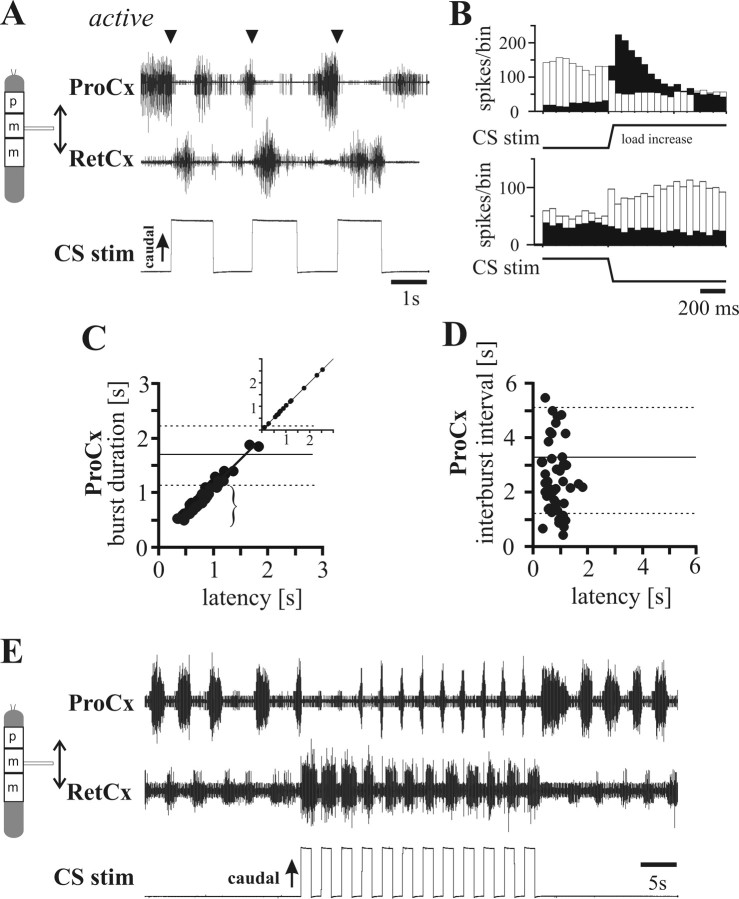Figure 1.
Effect of CS stimulation on the ThC-joint motoneuron activity in insects with activated locomotor systems. A, Extracellular recordings from ProCx (top trace; nerve nl2) and RetCx (middle trace; nerve nl5) nerves during CS stimulation (bottom trace) of a middle leg in a stick insect activated by tactile stimulation. CS stimulation (upward deflection indicates caudal bending of the femur) induced a transition from ProCx to RetCx activity (arrowheads). B, PST histograms (bin width, 50 ms) illustrating that ProCx activity (white bars) decreased and RetCx activity (black bars) increased during CS stimulation by caudal bending of the femur (top histogram; n = 27) in one tactilely activated stick insect. Rostral bending on average increased ProCx activity but only slightly decreased RetCx activity (bottom histogram; n = 27) C, Plot of the duration of ProCx bursts in which a stimulus was applied as a function of latency between ProCx burst onset and the stimulation onset during pilocarpine-induced rhythmic activity in four animals (n = 46; R2 = 0.96) and in one tactilely activated animal (inset, n = 17; R2 = 0.99). Note that, when stimuli occur early in the ProCx burst, the bursts (bracket) were significantly shorter than under control conditions. Horizontal lines indicate mean (solid line) ± SDs (dashed lines) of ProCx burst durations without stimuli (N = 4; n = 140). D, Plot of the interburst intervals after the terminated ProCx bursts (in C) as a function of latency between ProCx burst onset and stimulation onset during pilocarpine-induced rhythmic activity in four animals (n = 46). Note that termination of the ProCx bursts by the CS stimuli did not alter the following interburst interval, indicated by no correlation (R2 = 0.01) and comparable interburst intervals after CS stimulation versus the control intervals. E, Entrainment of ThC-joint motoneuron activity by load signals from the leg. Sample recording of ProCx (top trace) and RetCx (middle trace) activity in the middle leg during repetitive stimulation with a higher frequency than the inherent frequency of the centrally generated rhythm in the presence of pilocarpine (for details, see Results).

